Table of Contents
ToggleIntroduction
Top 7 exercises that start with E are essential for maintaining optimal physical and mental health. Besides the obvious benefits of weight management and cardiovascular health, E exercises have far-reaching positive effects. Furthermore, E exercise fosters cognitive function, and improves memory and concentration. In a society with an inactive lifestyle, the importance of E exercise has become imperative for overall well-being, highlighting the need to include physical activity into our daily routines.
Embarking on a fitness journey with a touch of creativity, this article will shed light on top 7 exercises that start with E, these exercises share a common thread—they all start with the letter ‘E.’ From engaging in energising endurance workouts to exploring the benefits of eccentric training, we explore the eclectic mix of exercises that boost your fitness routine. Whether you’re an exercise enthusiast or a newcomer to the world of workouts, this exploration of ‘E’- exercises offers a unique and effective approach for achieving a healthier and active lifestyle.
Read more : https://majesticpulse.com/7-mind-exercises-to-strengthen-your-cognitive-core/
Exercises that start with E

Starting a fitness journey filled with creativity, we explore the range of exercises that share a common denominator—they all start with the letter ‘E.’ This unique approach not only introduces an element of novelty to your workout routine but also opens the door to a diverse range of movements targeting different muscle groups and fitness goals. From energetic endurance exercises to the particulars of eccentric training, the exploration of ‘E’- exercises promises a fresh and effective perspective on achieving a healthier, active lifestyle. Join us as we navigate through this alphabetically inspired fitness venture, discovering the benefits and versatility that E-exercises bring to the search of physical well-being.
E-exercises offer a unique blend of versatility and effectiveness, and provide a diverse range of movements that target various muscle groups and fitness objectives. From energetic and heart-pumping endurance workouts to eccentric exercises that emphasize controlled muscle lengthening, the versatility of ‘E’-exercises accommodates different fitness levels and preferences. Whether it’s embracing the intensity of explosive movements or engaging in mindful stretches, this diverse set of exercises brings both dynamism and efficacy to a workout routine. The ‘E’ category proves to be a rich source of options, allow individuals to tailor their fitness routines to their specific goals while adding an engaging and effective twist to their search for a healthier lifestyle.
Top 7 Exercises That Start With E
Elliptical training

Elliptical training is a low-impact cardiovascular exercise that combines the benefits of walking, running, and stair climbing into a fluid, elliptical motion. Using a machine with foot pedals and often moving handles, this exercise engages both the upper and lower body simultaneously. For elliptical training, start with a brief warm-up, and ensure proper posture with a straight spine. Gradually increase the resistance and pace as you become more comfortable, making use of the handles to involve the arms and maintain a full-body workout.
Instructions
- Setup: Adjust the resistance and incline settings on the elliptical based on your fitness level. Stand on the pedals with your feet securely placed.
- Grip: Hold the handlebars firmly, keeping your posture upright with your back straight and shoulders relaxed.
- Start: Begin pedaling by pushing the pedals forward with a smooth, continuous motion. Engage your legs and maintain a steady pace.
- Sync: Coordinate your arm movements with the handlebars, pushing and pulling in rhythm with your leg strides.
- Intensity: Gradually increase the resistance or speed to challenge yourself, ensuring you maintain control and balance.
- Cooldown: Lower the resistance and slow your pace for 3-5 minutes to cool down and bring your heart rate back to normal.
Muscles Involved
- Quadriceps
- Hamstrings
- Glutes
- Calves
- Core (stabilization)
- Arm and shoulder muscles (if using handlebars)
Elbow plank

The elbow plank is a core-strengthening exercise that targets the abdominal muscles, back, and shoulders. To perform the elbow plank, start by kneeling on the floor and place your forearms on the ground, ensuring they are directly beneath your shoulders. Extend your legs straight behind you, lifting your hips to create a straight line from head to heels. Involve your core, squeeze your glutes, and hold the position for as long as you can while maintaining proper form. Focus on your breathing throughout the exercise. This simple and effective isometric movement builds core stability and strength, making it a valuable addition to your fitness routine.
Instructions
- Position: Lie face down on the floor, then lift your body onto your forearms and toes. Keep your elbows aligned under your shoulders.
- Align: Maintain a straight line from your head to your heels, ensuring your hips don’t sag or lift too high.
- Engage: Tighten your core, glutes, and legs to stabilize your body. Keep your neck neutral and gaze at the floor.
- Hold: Stay in this position for your desired time, breathing steadily and avoiding any tension in your shoulders or neck.
- Relax: Lower your knees to the ground and return to a resting position when done. Gradually increase the duration as you build strength.
Muscles Involved
- Core muscles (rectus abdominis, transverse abdominis)
- Shoulders (deltoids)
- Upper back (trapezius)
- Glutes
- Legs (quadriceps)
Elevated push-ups

Elevated push-ups are a dynamic variation of the classic push-up that adds an extra challenge by elevating the upper body. To perform elevated push-ups, find a stable surface such as a bench, step, or elevated platform, and assume a traditional push-up position with your hands slightly wider than shoulder-width apart. Place your feet on the elevated surface, creating an incline. Lower your chest towards the ground while keeping your body in a straight line from head to heels. Engage your chest, shoulders, triceps, and core as you push back up to the starting position. This variation intensifies the focus on the upper chest and shoulders by engaging the core and arms.
Instructions
- Setup: Place your hands on an elevated surface, such as a bench or step, slightly wider than shoulder-width apart. Keep your body in a straight line.
- Position: Extend your legs behind you, balancing on your toes. Ensure your core is engaged, and your hips are aligned with your body.
- Lower: Bend your elbows and lower your chest towards the elevated surface, keeping your back flat and neck neutral.
- Push: Press through your palms to straighten your arms, returning to the starting position. Exhale as you push up.
- Repeat: Perform the desired number of repetitions, maintaining proper form throughout. Adjust the height for added difficulty as you progress.
- Cooldown: Stretch your arms and shoulders after completing your sets to release tension.
Muscles Involved
- Chest (pectoralis major)
- Shoulders (deltoids)
- Triceps
- Core muscles (for stabilization)
- Upper back (trapezius)
Eccentric pull-ups

Eccentric pull-ups, a valuable exercise in building upper body strength, particularly target the negative or lowering phase of the traditional pull-up. Start by reaching the top position of a pull-up, either by jumping or using assistance if necessary. Once at the top with your chin above the bar, slowly and with control, lower yourself down, resisting gravity. The eccentric phase places great emphasis on the muscles engaged during pull-ups, such as the back, shoulders, and arms. Performing this controlled movement challenges these muscle groups eccentrically and contribute to increased strength and endurance.
Instructions
- Grip: Grab the pull-up bar with an overhand grip, slightly wider than shoulder-width apart. Keep your core engaged.
- Position: Start at the top position by either jumping or using a step to bring your chin above the bar.
- Lower: Slowly lower your body in a controlled motion, taking 3–5 seconds to extend your arms fully.
- Engage: Keep your core tight and shoulders away from your ears as you descend, maintaining proper form.
- Reset: Release your grip or step back onto the platform and return to the starting position.
- Repeat: Perform 4–6 controlled repetitions to build strength and endurance over time.
Muscles Involved
- Upper back (latissimus dorsi, trapezius, rhomboids)
- Biceps
- Shoulders (deltoids)
- Core muscles (for stabilization)
Extended Arm Reach

Extended Arm Reach is a dynamic and functional exercise designed to enhance shoulder mobility and strengthen the muscles of the upper body. To perform this exercise, begin in a seated or standing position with a straight spine. Extend one arm laterally at shoulder height, palm facing down. Simultaneously, reach the opposite arm diagonally across the body, aiming to touch the extended hand. This movement engages the shoulders, chest, and core, promoting flexibility and stability. Alternate arms in a controlled manner, focusing on maintaining proper form and breathing throughout the exercise.
Instructions
- Setup: Begin in a tabletop position on your hands and knees, with your wrists under your shoulders and knees under your hips.
- Extend: Slowly stretch one arm forward, reaching as far as possible without straining. Keep your neck aligned with your spine.
- Balance: Engage your core to maintain stability, ensuring your body doesn’t tilt or wobble as you hold the position.
- Hold: Pause for 2–3 seconds at full extension, feeling the stretch through your arm and shoulder.
- Switch: Return your arm to the starting position and repeat with the other arm, alternating sides.
- Repeat: Perform 10–12 repetitions per side, focusing on controlled and smooth movements to avoid imbalance.
Muscles Involved
- Core muscles (rectus abdominis, obliques)
- Shoulders (deltoids)
- Upper back (trapezius, rhomboids)
- Glutes (for balance and stabilization)
External Rotations for Shoulders
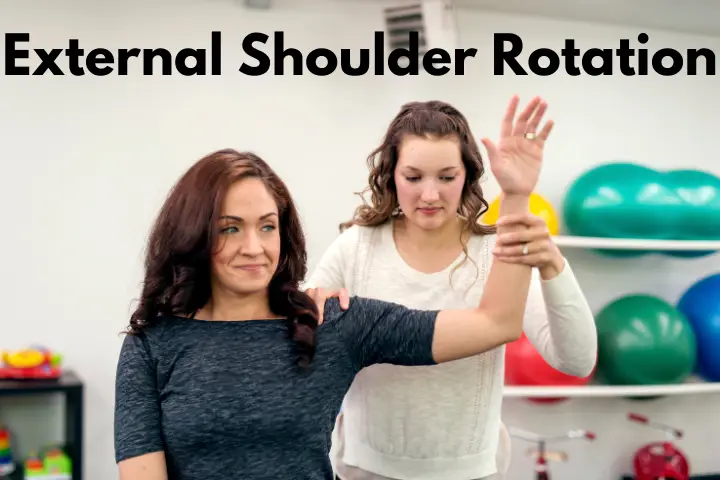
External rotations for the shoulders are a targeted exercise intended to strengthen the rotator cuff muscles, enhancing shoulder stability, and preventing injury. To perform external rotations, start by holding a resistance band or a light dumbbell in one hand with your elbow bent at a 90-degree angle and tucked against your side. Keeping your forearm parallel to the ground, rotate your hand outward against the resistance, moving away from your body. The emphasis should be on the controlled outward movement, engaging the muscles responsible for external rotation. Return to the starting position and repeat for the recommended number of repetitions before switching to the other arm.
Instructions
- Setup: Hold a resistance band or light dumbbell in one hand. Stand upright with your elbow bent at 90 degrees, close to your side.
- Position: Anchor the band securely (e.g., to a door) or keep your other hand steady if using a dumbbell. Keep your palm facing inward.
- Rotate: Slowly rotate your arm outward, keeping your elbow fixed by your side. Focus on using your shoulder muscles.
- Control: Pause briefly at the end of the rotation, ensuring your movement is smooth and controlled.
- Return: Gradually bring your arm back to the starting position without letting the band snap or dropping the dumbbell.
- Repeat: Perform 10–12 repetitions on one side, then switch to the other arm. Maintain proper posture throughout.
Muscles Involved
- Rotator cuff muscles (infraspinatus, teres minor)
- Shoulders (deltoids)
- Upper back (trapezius)
Endurance Running

Endurance running is a cardiovascular exercise that focuses on sustaining a steady pace over an extended period, enhancing cardiovascular fitness and stamina. To engage in endurance running, start with a gradual warm-up to prepare your muscles and joints. Choose a comfortable running pace that allows you to maintain steady breathing and conversation throughout the workout. Whether on a treadmill, track, or outdoor trail, the key is to sustain the run for an extended duration, typically beyond 30 minutes, to challenge the cardiovascular system and build endurance.
Instructions
- Warm-Up: Start with a 5–10-minute warm-up, including light jogging and dynamic stretches to prepare your muscles and joints.
- Pace: Begin at a comfortable pace, focusing on steady breathing and maintaining a sustainable rhythm for long distances.
- Posture: Keep an upright posture, with your shoulders relaxed, arms swinging naturally, and your gaze forward.
- Hydrate: Stay hydrated by sipping water before and after the run and carry water if running for extended periods.
- Push: Gradually increase your speed or distance over time to challenge your endurance but avoid overexertion.
- Cooldown: End with a 5-minute walk or light jog and stretching to relax your muscles and prevent soreness.
Muscles Involved
- Quadriceps
- Hamstrings
- Glutes
- Calves
- Core muscles (stabilization)
- Hip flexors
How to Start Exercises that start with E (A step-by-step guide for beginners)
Starting E exercises as a beginner can be an exciting and rewarding journey. Here’s a step-by-step guide to help you get started:
Evaluate Your Fitness Level
Before beginning any exercise program, assess your current fitness level and health condition. Consider consulting with a healthcare professional or fitness expert, especially if you have any pre-existing health concerns.
Choose a Variety of E Exercises
Explore a range of ‘E’-exercises to ensure a well-rounded workout routine. Include options like Endurance activities (brisk walking, jogging), Eccentric exercises (controlled lowering of weights), and flexibility-enhancing moves (yoga’s Eagle Pose).
Warm-Up Routine
Begin each session with a proper warm-up to prepare your muscles and joints. Include dynamic movements like arm circles, leg swings, and light aerobic exercises to increase blood flow and flexibility.
Start with Low Intensity
As a beginner, focus on low to moderate intensity exercises to build a solid foundation. Gradually increase the intensity as your fitness level improves. This could involve starting with shorter durations and lighter weights.
Correct Form is Key
Pay close attention to proper form and technique for each exercise. This not only ensures effectiveness but also minimizes the risk of injuries. Consider seeking guidance from a fitness professional or using online tutorials for correct posture.
Gradual Progression
Progress at a pace that is comfortable for you. Gradually increase the duration, intensity, or complexity of your exercises as your strength and endurance improve. Consistent progression is key to long-term success.
Rest and Recovery
Give your body enough time to rest and recover between sessions. Proper rest is crucial for preventing burnout and reducing the risk of overuse injuries.
Mix and Match Exercises
Keep your routine interesting by including a mix of exercises. This could involve alternating between different ‘E’ exercises throughout the week, providing variety to keep you engaged.
Listen to Your Body
Pay attention to how your body responds to each exercise. If you experience pain (not to be confused with the discomfort associated with a challenging workout), adjust or stop the exercise and consult with a professional if needed.
Stay Consistent
Consistency is key to seeing progress. Aim for a regular workout schedule, gradually increasing the frequency as you become more comfortable with your routine.
Remember, the goal is to enjoy the process and make exercise a sustainable part of your lifestyle. If in doubt or discomfort, seek guidance from fitness professionals to ensure a safe and effective fitness journey.
Tips for proper form of E Exercise
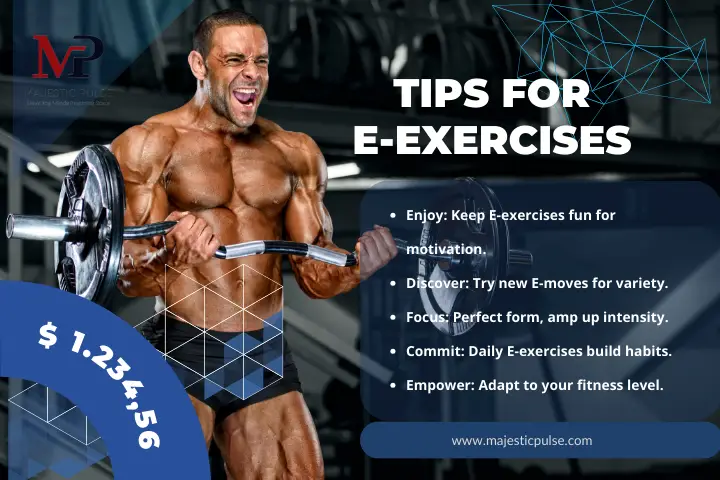
1. Prioritize Proper Form
For ‘E’-exercises, one should prioritize proper form over intensity. Ensure that your body is aligned correctly during each movement to prevent injuries and maximize effectiveness. If needed, seek guidance from a fitness professional or use online resources to understand the correct posture for each exercise.
2. Start with Manageable Intensity
As a beginner, start with exercises that match your current fitness level. Opt for low to moderate intensity to build a strong foundation. This might involve choosing lighter weights, shorter durations, or less challenging variations of each exercise. Starting with manageable intensity reduces the risk of overexertion and allows your body to adapt gradually.
3. Focus on Controlled Movements
Emphasize controlled movements during each exercise. This is particularly important for eccentric exercises, where the focus is on the lengthening phase of the muscle. Slow, controlled motions not only enhance muscle engagement but also reduce the likelihood of strain or injury.
4. Listen to Your Body
Pay attention to how your body responds to each exercise. If you experience pain (beyond the typical discomfort associated with a workout), adjust your form or modify the exercise. It’s crucial to differentiate between the normal challenges of a workout and signs of potential injury.
5. Progress Gradually
Gradual progression is key to a sustainable fitness journey. Once you feel comfortable with the current intensity, consider making subtle adjustments. This could involve increasing the duration, adding a bit more resistance, or advancing to more challenging variations. Incremental changes over time contribute to steady and sustainable progress.
6. Include Rest and Recovery
Allow your body sufficient time to rest and recover between workouts. Adequate recovery is essential for muscle repair and overall well-being. Include rest days in your weekly routine and listen to your body’s signals for when it needs a break.
7. Incorporate Variety
Keep your routine interesting by incorporating a variety of ‘E’-initiated exercises. This not only prevents monotony but also ensures that different muscle groups are engaged. Variety also reduces the risk of overuse injuries associated with repetitive movements.
8. Use Supportive Footwear and Equipment
Depending on the exercises you choose, invest in supportive footwear and appropriate equipment. This provides stability during movements and reduces the risk of strain or injury.
9. Stay Hydrated
Proper hydration is crucial during any exercise routine. Drink water before, during, and after your workouts to maintain optimal performance and support recovery.
10. Consult a Professional
If unsure about proper form or progression, consider consulting with a fitness professional. They can provide personalized guidance, ensuring that your exercise routine aligns with your goals and abilities.
By incorporating these tips into your fitness journey, you’ll not only enhance the effectiveness of ‘E’-exercises but also promote a safe and enjoyable experience as you work towards your health and fitness goals.
Common Mistakes to Avoid
- Skipping Warm-Up: Neglecting a warm-up increases the risk of injury and hampers overall performance.
- Poor Form: Maintaining proper form is crucial. Incorrect form can lead to injuries and diminish the effectiveness of the exercise.
- Ignoring Pain: Pain is not normal during exercises. If you experience pain (not to be confused with discomfort), stop and assess the situation.
- Overtraining: Gradual progression is key. Overtraining can lead to burnout, fatigue, and an increased risk of injuries.
- Neglecting Hydration: Dehydration affects performance and recovery. Ensure you stay hydrated before, during, and after your workout.
- Lack of Variation: Incorporate variety in your routine to avoid plateaus and prevent overuse injuries from repetitive movements.
- Incorrect Resistance: Using too much or too little resistance can compromise the effectiveness of an exercise. Choose a level that challenges but allows proper form.
- Ignoring Fatigue: Pushing through extreme fatigue increases the risk of injury. Pay attention to your body’s signals and incorporate rest days into your routine.
By prioritizing warm-ups, practicing proper form, and avoiding common mistakes, you can create a safer and more effective workout routine. Always listen to your body, make gradual progressions, and seek professional guidance if needed.
Benefits of Exercise
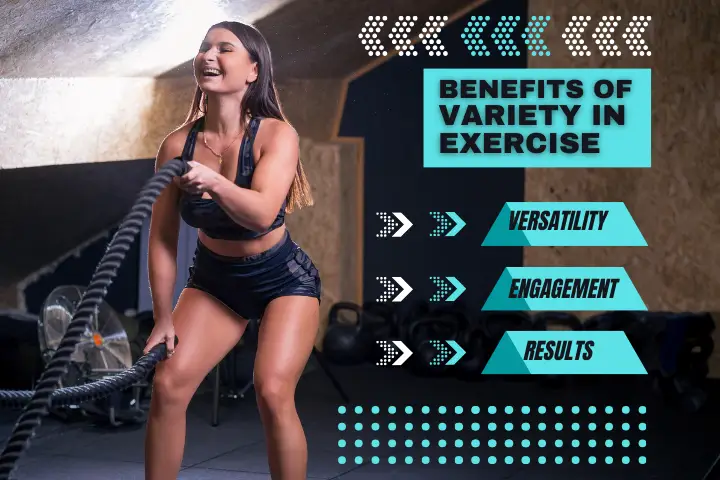
Exercise matters because it is the cornerstone of a healthy and fulfilling life. Regular physical activity not only enhances physical fitness but also plays a crucial role in maintaining mental well-being. Whether it’s a brisk walk, a challenging workout, or a yoga session, incorporating regular exercise into daily life is an investment in vitality, resilience, and a better quality of life. The impact of exercise on both physical and mental aspects of well-being underscores its significance as a fundamental and multifaceted tool for a healthier and more fulfilling life.
Cardiovascular Health
Regular exercise supports a healthy heart and enhances cardiovascular function, reducing the risk of heart diseases and related complications.
Weight Management
Exercise plays a crucial role in maintaining a healthy weight by expending calories and promoting a balanced metabolism.
Muscle Strength and Flexibility
Engaging in physical activity enhances muscle strength, flexibility, and overall physical fitness, contributing to better functional abilities.
Bone Health
Regular weight-bearing exercises are essential for maintaining strong and healthy bones, reducing the risk of osteoporosis.
Stress Reduction
Exercise serves as a potent stress reliever by releasing endorphins, improving mood, and helping to manage daily stressors effectively.
Cognitive Function
Physical activity is associated with improved cognitive function, including enhanced memory, concentration, and overall mental acuity.
Improved Sleep
Regular exercise is linked to better sleep patterns, contributing to restful and rejuvenating sleep, which is essential for overall well-being.
Mood Enhancement
The release of endorphins during exercise acts as a natural mood lifter, promoting a positive and resilient mental state.
Reduced Risk of Chronic Diseases
Consistent physical activity is linked to a decreased risk of chronic conditions such as type 2 diabetes, certain cancers, and hypertension.
Enhanced Longevity
Incorporating exercise into a routine is associated with increased life expectancy and a higher quality of life in the long term.
Conclusion

E-exercises offer a range of benefits that contribute to holistic well-being. As we wrap up this exploration, it’s crucial to emphasize the power of variety in your fitness journey. Incorporating diverse exercises not only prevents boredom but also ensures a balanced approach to strength, flexibility, and endurance. Embrace the richness of different movements to challenge your body, prevent plateaus, and cultivate a sustainable fitness routine. Remember, the true essence of a fulfilling fitness journey lies in the fusion of dedication, variety, and the joy of movement. Cheers to your well-being, vitality, and the many opportunities that a diverse fitness programme may provide!
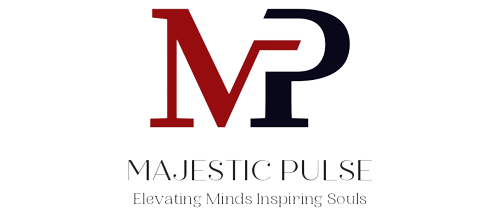
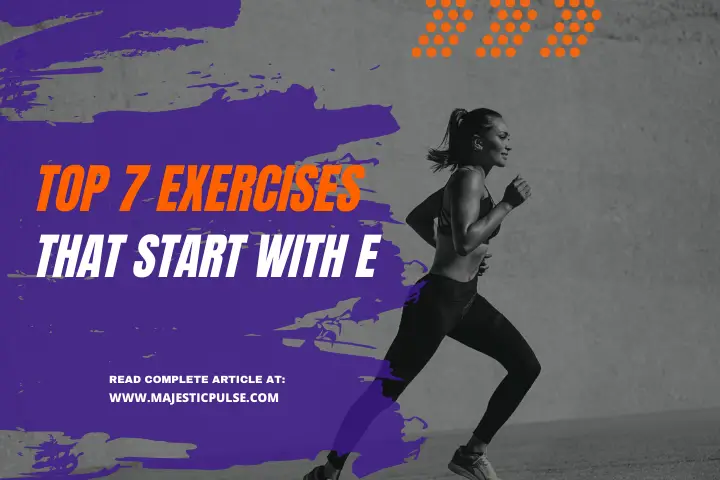














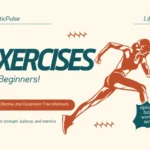



3 Responses